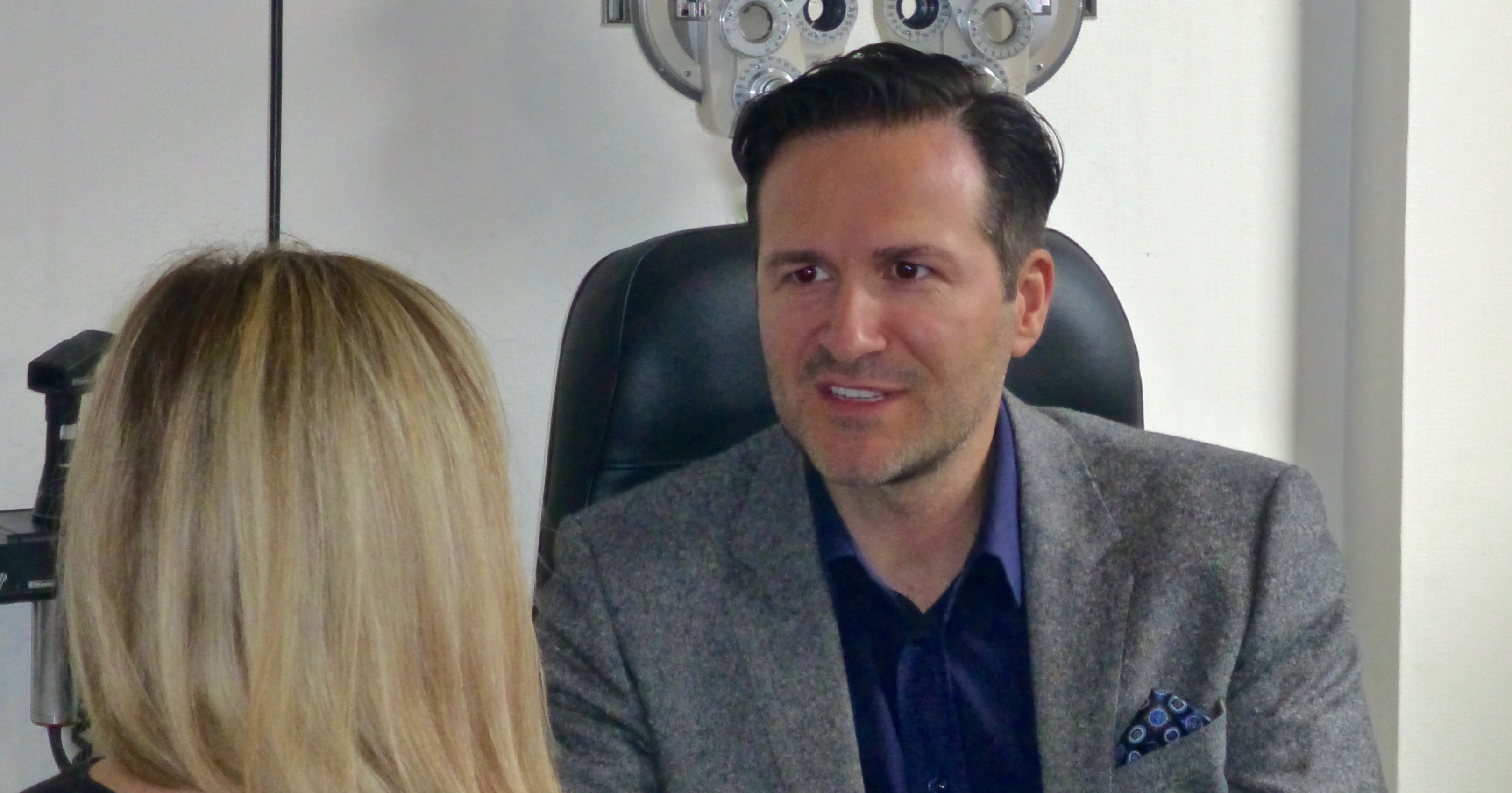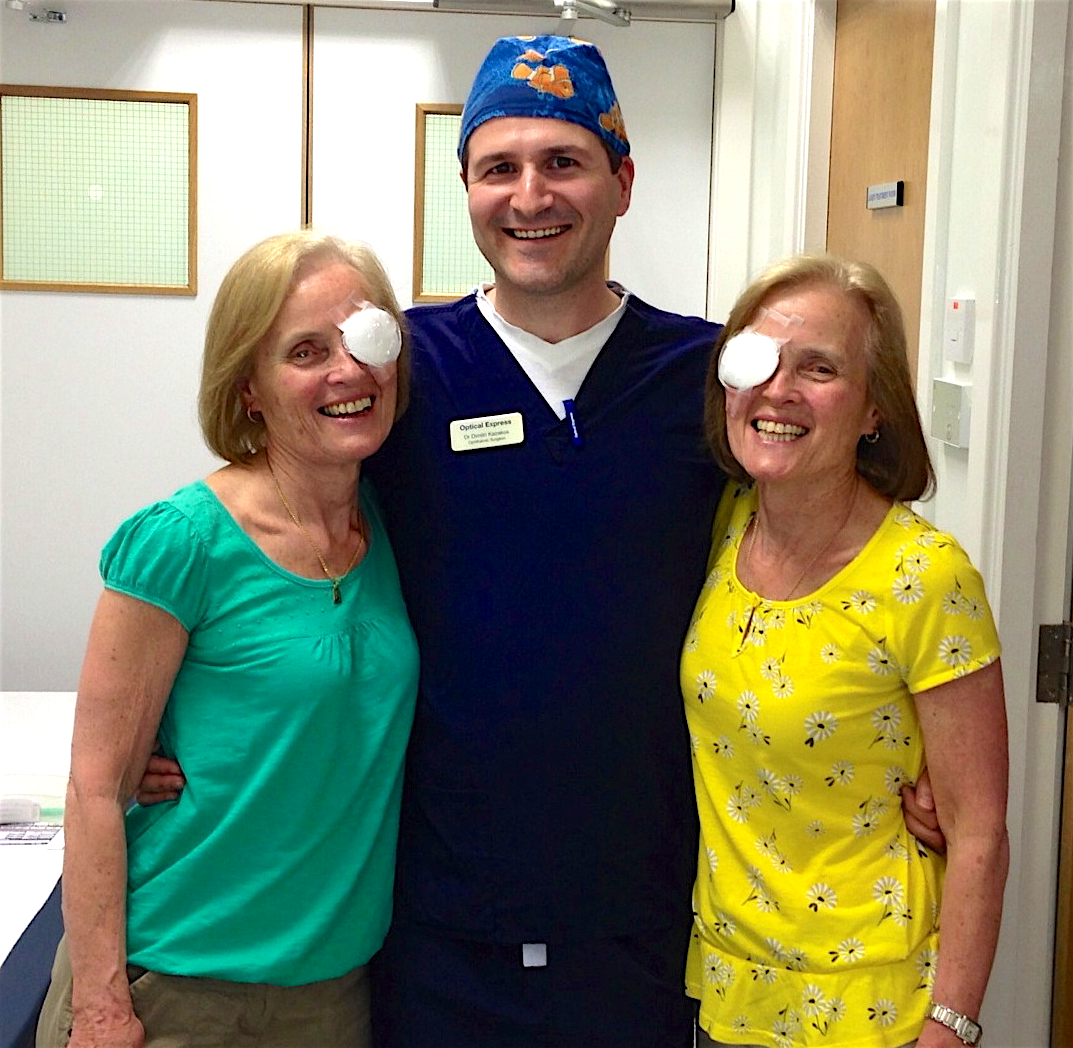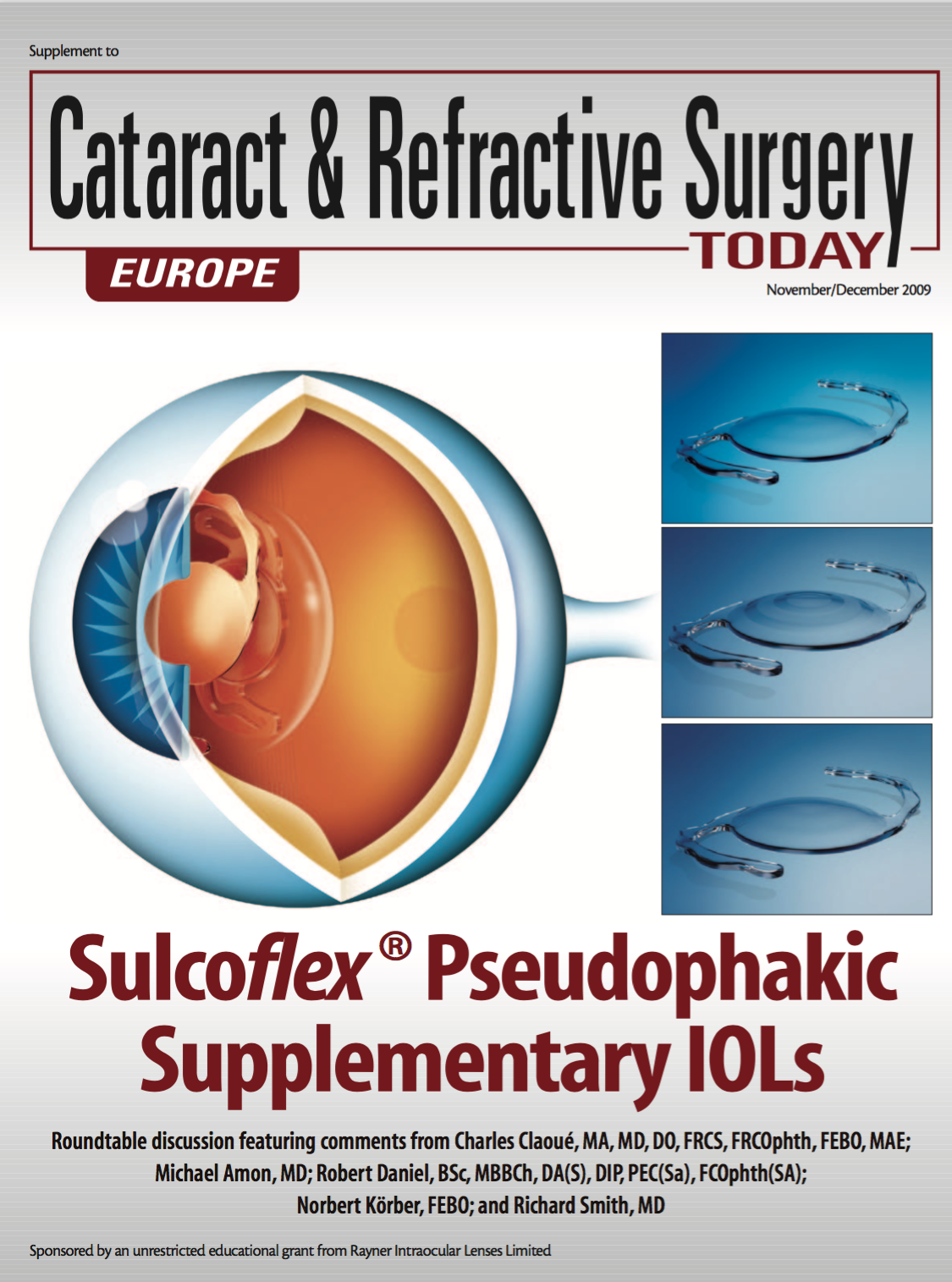Refractive Lens Exchange
If you’ve landed on this page, chances are you have eye-sight issues that are starting to bother you. Congratulations for doing your research! You may be wondering if and how surgery can help you get rid of your eye-sight issues. Here there is a break down of the facts behind RLE for you.Introduction to RLE
IOL Surgery: What is it?
IOL surgery also known as refractive lens exchange (RLE) or natural lens replacement (NLR). It is similar to cataract surgery however, it is performed at an earlier stage before a cataract has developed in order to minimise patients dependence on spectacles. It is now increasing in popularity and it is only second to LES as the most common elective surgery with millions of happy patients worldwide. RLE works by exchanging the natural and increasingly dysfunctional lens of the eye called crystalline lens for a permanent plastic one that has the correct power and optical quality to give some form of spectacle independence. The general result is a more natural spectacle free vision for many years to come.
What types of IOLs exist?
RLE employ a wide array of IOLs depending on the patient requirements: level of prescription, the presence of corneal scars, previous eye surgery, pupil size, age of patient, occupation, lifestyle, presence of medical condition like Diabetes, Glaucoma, Macular degeneration etc. Some of the common IOL types are listed below.
- Monofocal: A monofocal lens uses a high precision optic to focus all light passing through the pupil to one focal point, this can be either near or distance or in between depending on Px requirements. (Tecnis ZA, ZCB, Sensar AR40e)
- Multifocal (bifocal, trifocal, sectoral, refractive, diffractive): To be a good candidate you need to already have a significant visual handicap and be a positive person seeing a glass half full as opposed to half empty and do not suffer from diabetes, macular pathologies or states like anxiety, depression, OCD or bipolar. These lenses can be viewed in lay terms as light splitters that some light does the distance and the rest does the near and/or intermediate vision. So, a weak MF lens vs intermediate vs strong lens would split the light to 80-20% vs 75-25% vs 55-45% for distance and near vision respectively. This is the only lens type that induces many images simultaneously and requires a significant brain adaptation that more than 90% of the general population can manage, especially the younger patients. Examples: Tecnis Symfony, Tecnis ZLB and ZKB, SBL-3, PhysIOL, Zeiss trifocal, Lentis M+ or Mx
- Tecnis Symfony: This is a new concept lens called Extended Depth-of-Focus (EDOF) IOL. The Symfony takes a different approach to maximizing a patient’s range of vision by addressing the optical property known as chromatic aberration. The idea behind chromatic aberration correction is simply to get the colors of the spectrum focused at the same point. “The different colors of the spectrum focus differently. Different materials have different dispersive properties with light; some focus colors closely together and some spread them out. The idea is that if you focus all of the colors together, you can have a higher quality of vision. The Symfony takes the AMO acrylic that focuses colors well—meaning it has a low dispersion—and improves upon it. This gives cataract patients a somewhat expanded depth of field without the drawbacks associated with a multifocal visual system. The EDOF lens will perform better at near distances than the monofocal, but not as well at near as the multifocal. But, halos and glare will be comparable to the monofocal.To understand how the Symfony can give more depth of field, it helps to understand the natural steps of accommodation, because the lens actually builds on them to get its effect. When we look up close, we experience the depth-of-field effect. Our pupils constrict giving us the equivalent of about 0.75 to 1 D more near vision than we’d have when looking into the distance because of the pinhole effect. Building on this natural accommodative effect, the Symfony uses diffractive optics to both improve the quality of vision from the lens and expand the range of distances the lens at which the lens can adequately focus. The first thing to understand is that the term diffractive optics doesn’t necessarily imply multifocality. This is not a multifocal lens, but it does use diffractive optics to do two things: First, it corrects chromatic aberration. Second, it uses these optics to extend the range of quality vision. With optics you can’t gain an expanded range of vision without losing something in terms of the sharpness of vision. However, by correcting chromatic aberration, even without using diffractive optics to expand the visual range, the lens would have extremely sharp distance vision on the order of 20/12 or even 20/10. The process is not yet done, however, in the Symfony. The diffractive optics are then used to expand the range of vision. Expanding the depth of focus degrades the tack-sharp “starting point” (something must be lost), but since the lens started with such sharp vision, it only degrades to about the level of 20/20. So the amount you degrade takes you back to the level of a good monofocal IOL.
Average study results indicate that the Symfony gives 20/20 or better vision at distance over a range of about 1.5 D, and 20/40 or better over a range of 2.5 D. 96% of patients had 20/25 or better vision at intermediate and 92% had 20/40 or better vision for near. In terms of quality of vision, it’s comparable to a monofocal from a night vision and a contrast sensitivity perspective. For more information and to see how the lens was developed have a look in my Blog - Accommodating: This is the only lens type that tries to utilise the function of the eye as a focusing apparatus. On principle this is a monofocal lens that has the ability due to it’s design to move a bit inside the eye thus improving the depth of focus however, such movement is not sufficient for full spectacle independence and may wean over time. It will require yag laser well before other lens types. Examples: Tetraflex HD (by Lenstec)
Tetraflex HD Accommodating lens by Lenstec
- Toric IOL This incorporates a special correction for astigmatism at the top of what is needed for good focus for distance. It can be used on both monofocal and multifocal lenses but not on accommodating lenses
- Monovision: This is not a lens but a method of using monofocal lenses to increase depth of focus. Around 50% of the general population can tolerate a relative imbalance of focus between the two eyes when one eye doing near vision and the other distance. This results in some imbalance and impaired 3D perception but improves functional spectacle independence in a natural way without the introduction of many aberration and glare and can easily be enhanced for better near or distance by the use of special spectacles.
- Piggy-bag IOL (Sulcoflex): This is a plane simple monofocal or multifocal lens like a contact lens very thin and elastic used to correct refractive surprise or to introduce mutlifocality after an otherwise successful cataract RLE surgery or a monofocal lens. The surgical procedure feels the same like the initial RLE or cataract however, it is a little bit faster and less risky as it does not require the removal of anything from inside the eye and instead it just a quick insertion of this lens. This lens can be safely removed at any time in the future should the visual requirements change.
- Imaging you are 55 years old and had a successful RLE with partial monovision as a refractive surprise. The insertion of this lens will give you correction of this surprise so that distance vision is very good and balanced for both eyes. However, after retirement in 10 years you could take it out and enjoy more spectacle independence with better near vision.
- Here you can download a supplement booklet with expert discussion about it :
- Aphakic (Artisan): This is an Iris haptic IOL (iris claw) very much like the p-IOLs however much thicker and placed behind the pupil. It is used exclusively for Px that had a complicated cataract surgery
Are you a good candidate for RLE?
If you are over 50-60 years old and depend on spectacles for the majority of your activities then yes you could be. The procedure is generally safe for all eye prescription types though patients with higher prescriptions should take precaution.
How it Works to Get Younger Vision?
IOLs through a cataract or RLE surgery refresh and rejuvenate the vision by removing an aging dysfunctional lens and replacing it with a clearer more optically perfect lens thus turning back the clock. The majority of over 70s feel that their vision like it was on their 40s.
How many Treatments will You Need?
Usually one but if you have a refractive surprise (5-10%) then you will likely need an enhancement with wither LVC or piggybag lens. It is likely (5% per year) that you will need yag laser posterior capsulotomy to clear the skin that contains the lens, this will not need to be repeated, it is minimally invasive and you can return back to work a few hours later. Additionally, if you had a multifocal lens and failed to adapt to its’ side-effects (0.5%) then you may need to exchange your IOL to a weaker multifocal lens or to a monofocal.
What are The Benefits of This Treatment?
Improvement of visual clarity in cases of cataract along with major degree of minimisation of spectacle dependance for the majority of the activities.

Does This Treatment Cause Any Harmful Effects?
According to most studies anything from 1 to 10% of patients with multifocal lenses may experience adverse effects. Side effects include temporary discomfort, redness and swelling. Without proper attention the eye may become inflamed and infected. No long-term effects are directly and exclusively associated with lens surgery however, dry eyes, floaters, glare, edge effects haloes, starbursts and ghosting may affect a minority of patients (less than 1%) for more than the usual month or two say over 6-12 months. More serious but rare events include retinal detachment (1/5.000), CME, ERM, macular hole, infection (1/10.000), loss of sight, loss of the eye-globe (1/100.000)
What Patients Have Experienced?
People who have availed of IOL surgery report a very low level dull ache starting hours after the treatment which may last for the night. A sharp pain may happen if there is a corneal abrasion but that is unusual. Those who have availed of IOL surgery for cataract noticed dramatic and more visible results a day after treatment, while those who have undergone RLE with multifocal IOLs they are impressed with the improvement of their near vision.
Bottom Line
As you continue your search for the ultimate solution to your visual problem, remember that there is no one procedure that can solve all your eye care worries in a single treatment and there are side-effects that can be irreversible. If you have a cataract then this surgery is not elective you have to do it however, the choice of IOL is elective and need to think carefully under my guidance what is best for your needs.
Guidance from the Royal College of Ophthalmologists
Who is RLE suitable for
What is the recovery time?
Book Your Consultation
Please book your consultation online by clicking the enquire now button below and filling in your details. Our team will get back to you as soon as possible.

